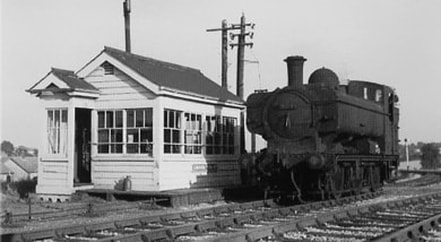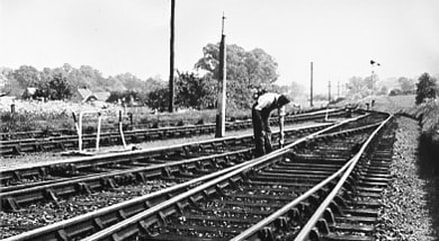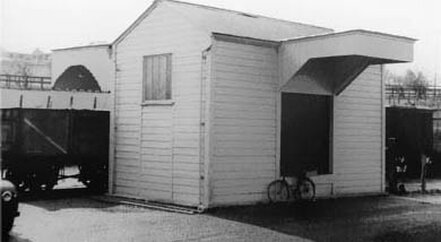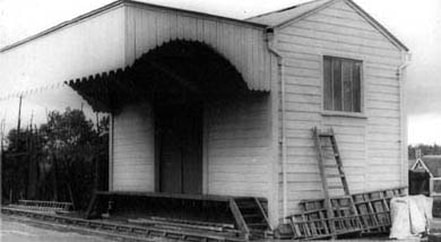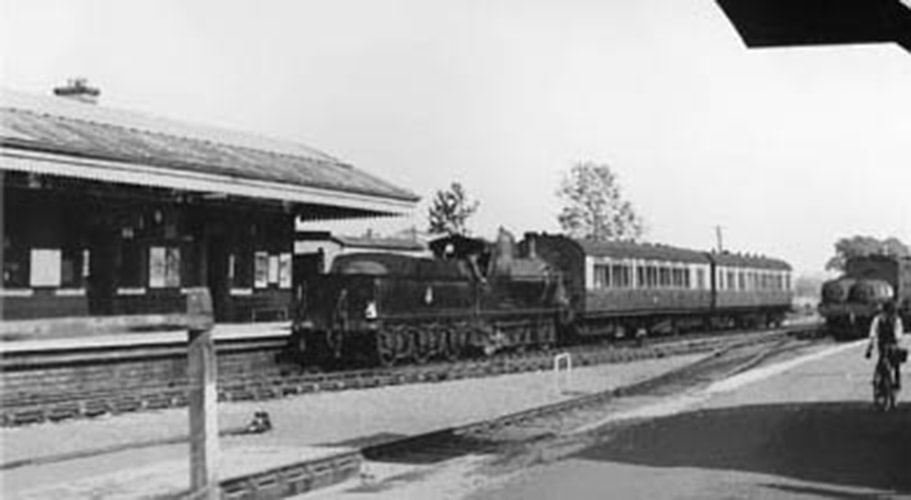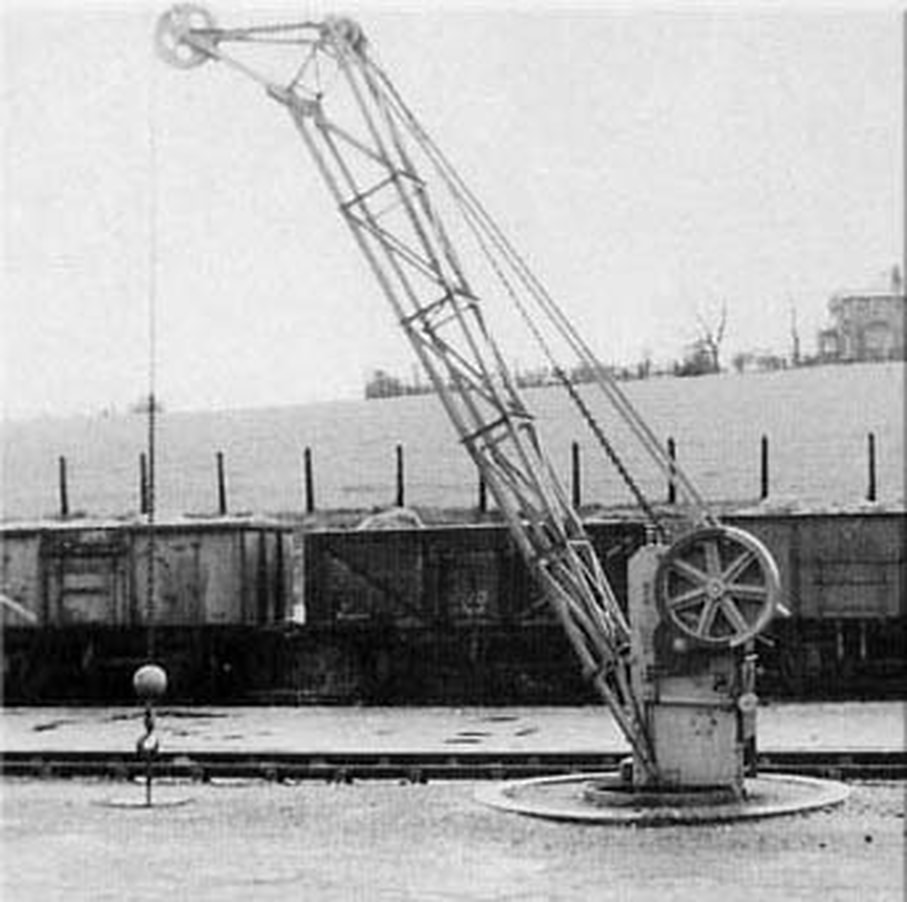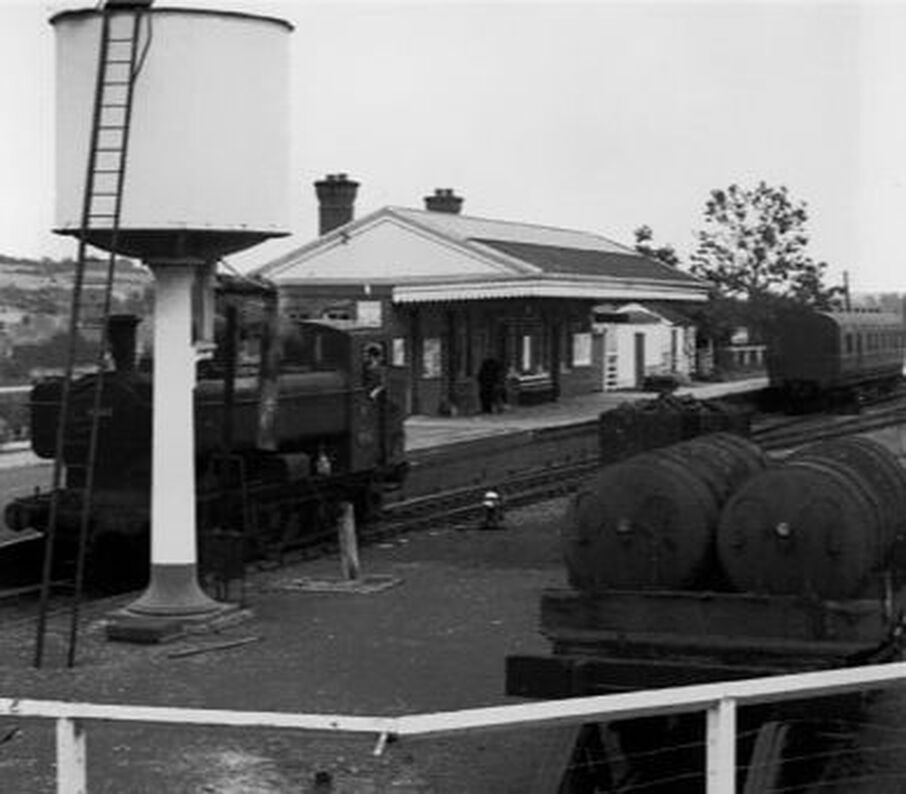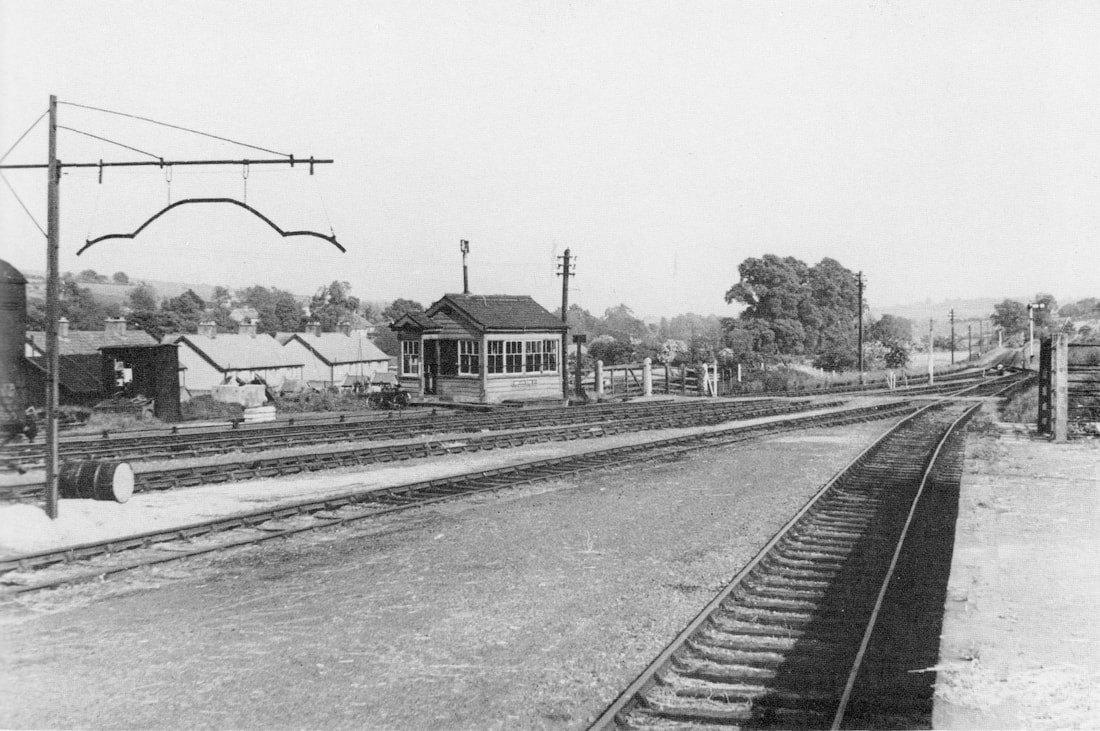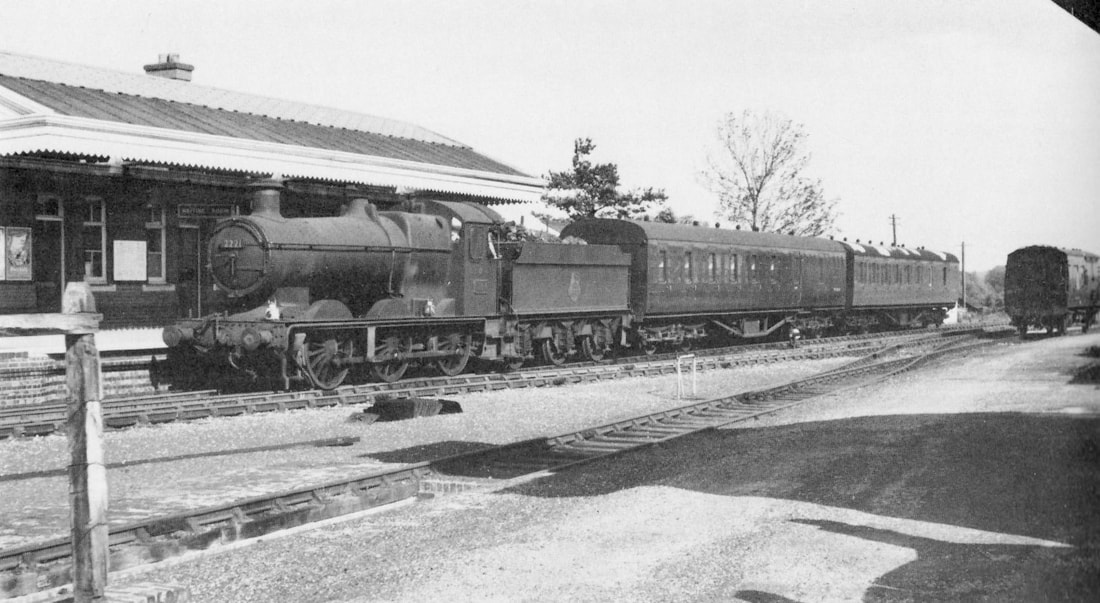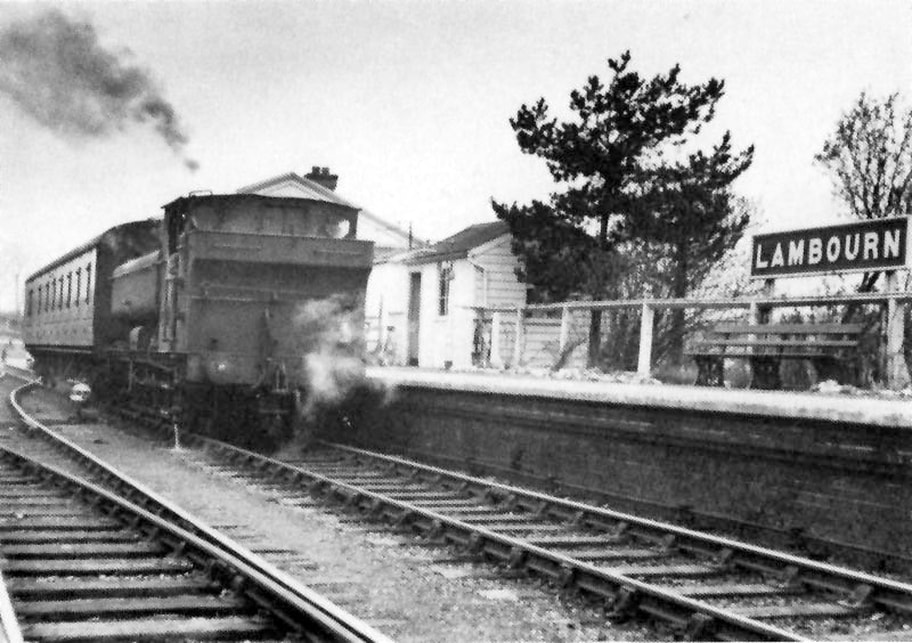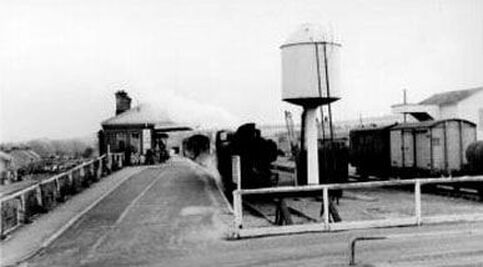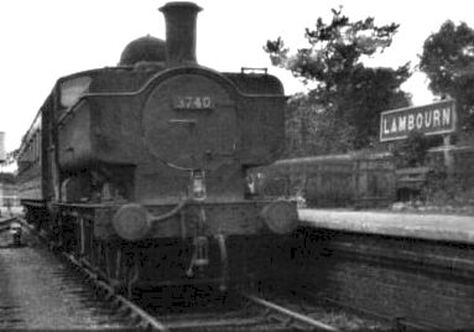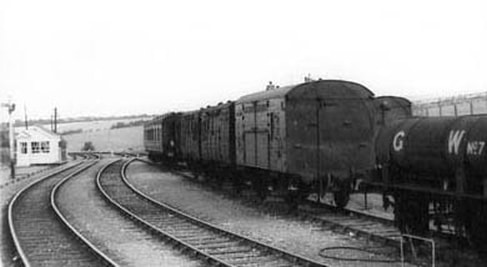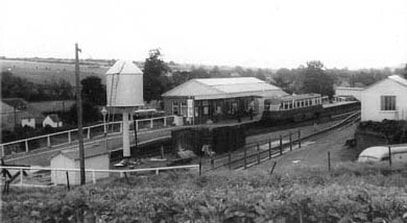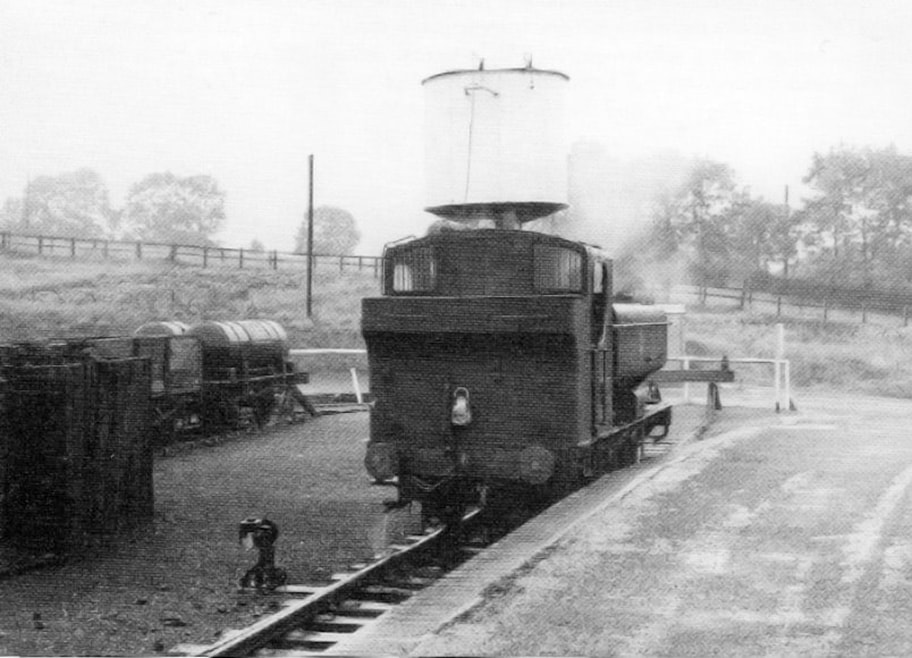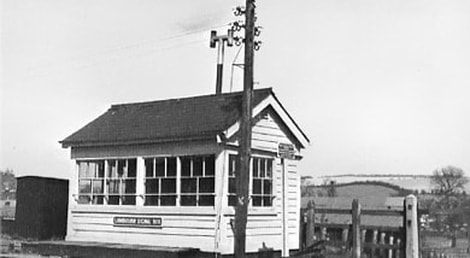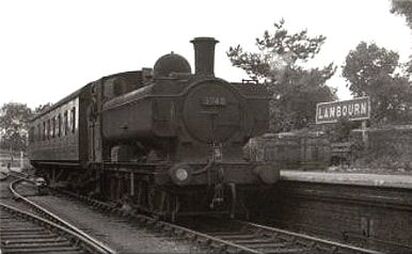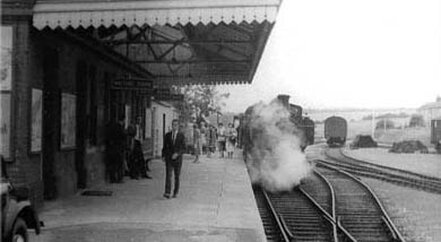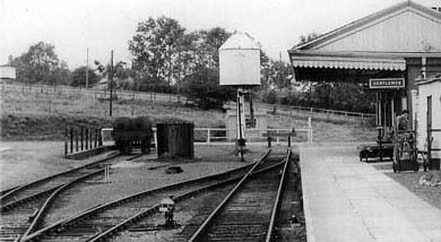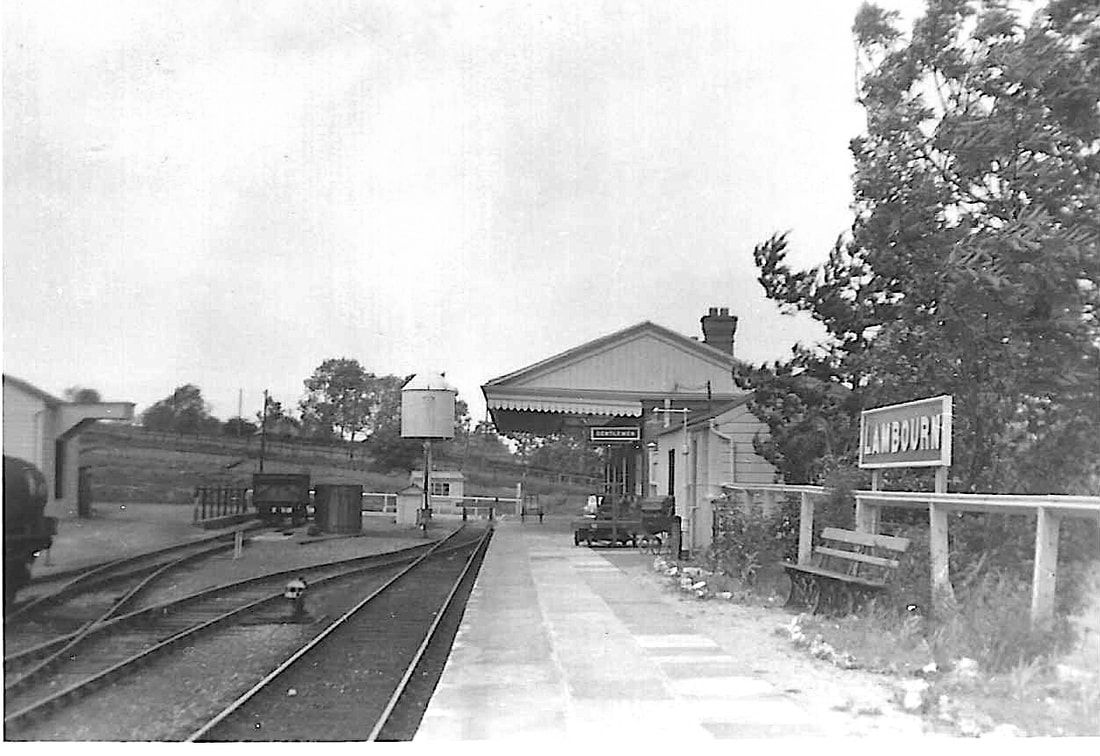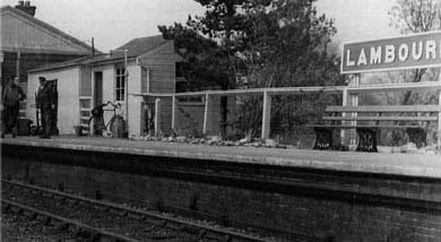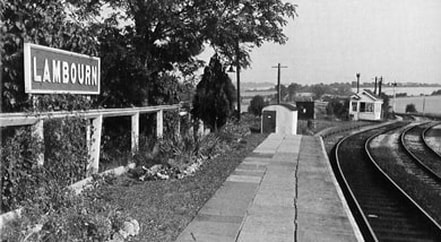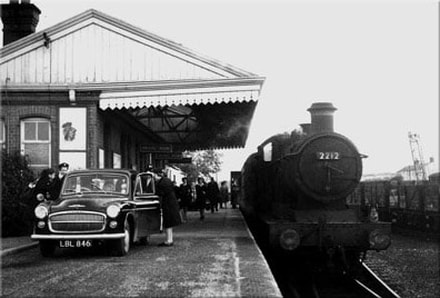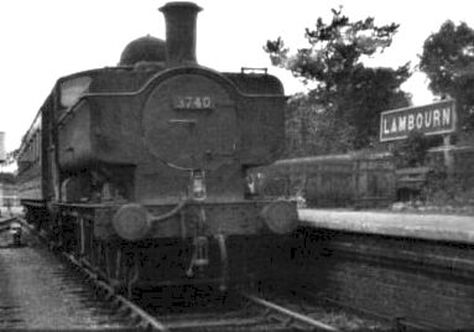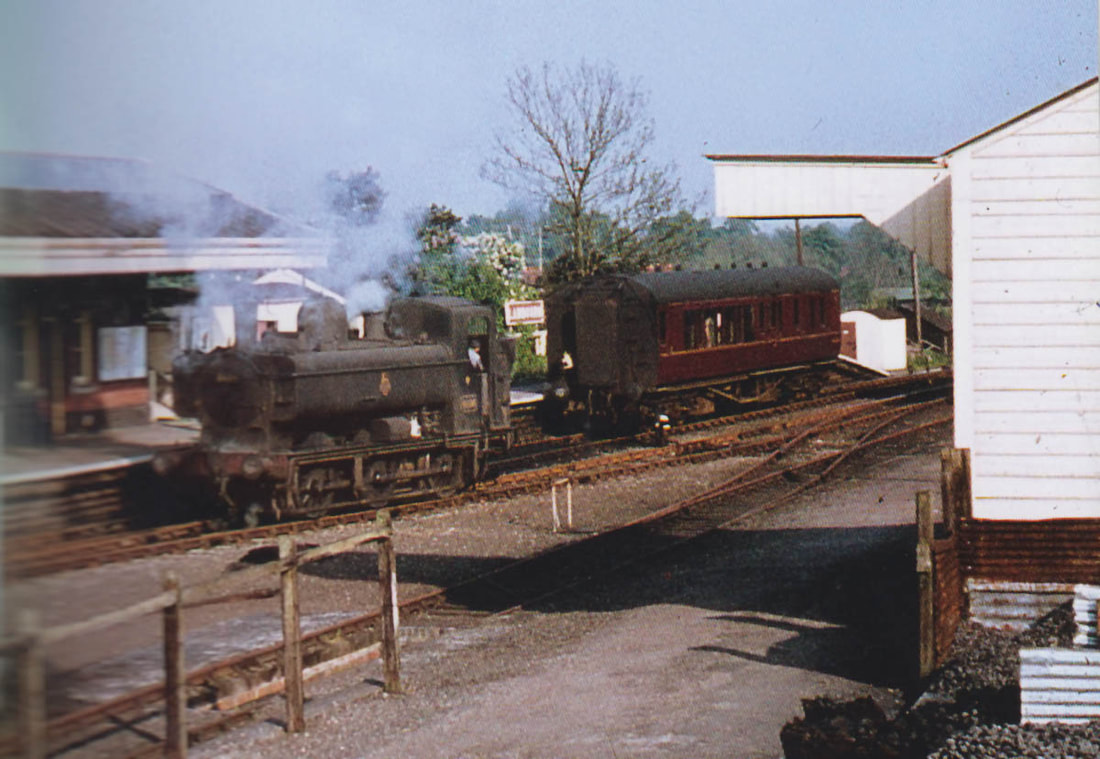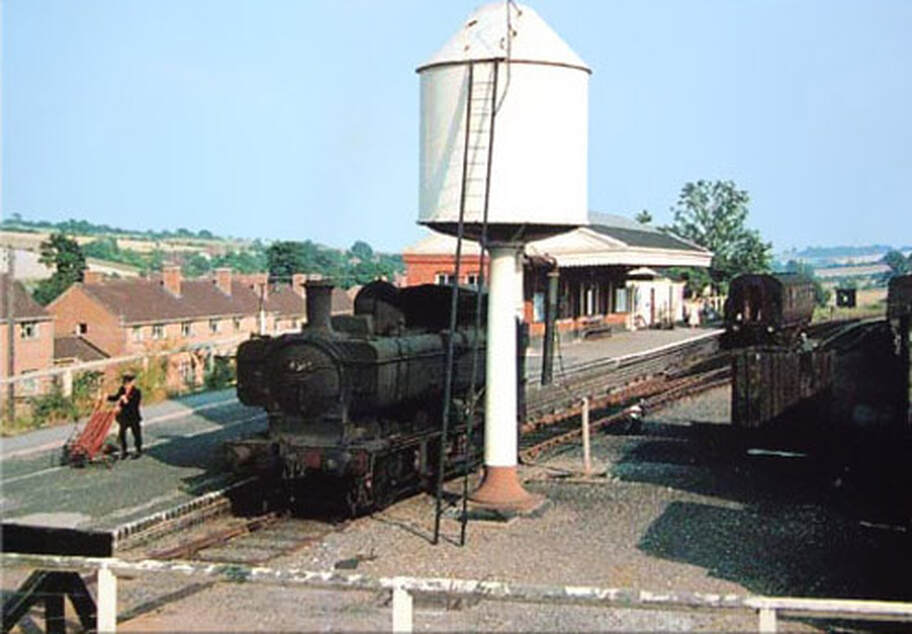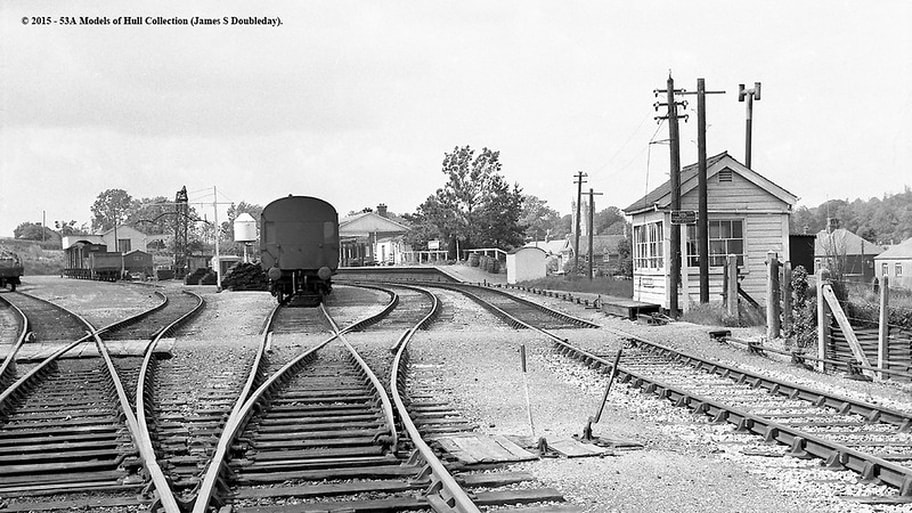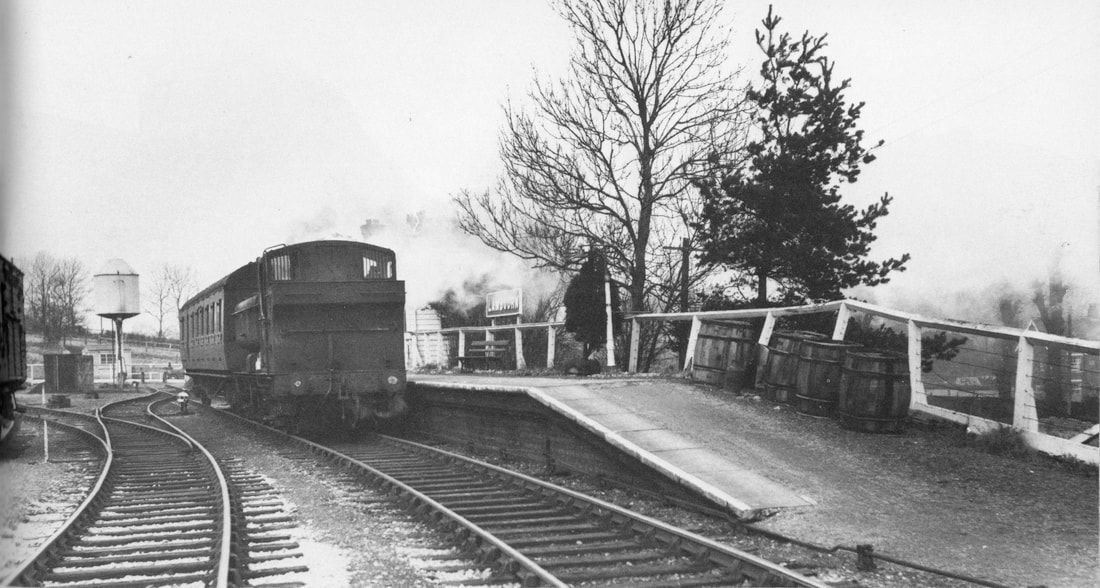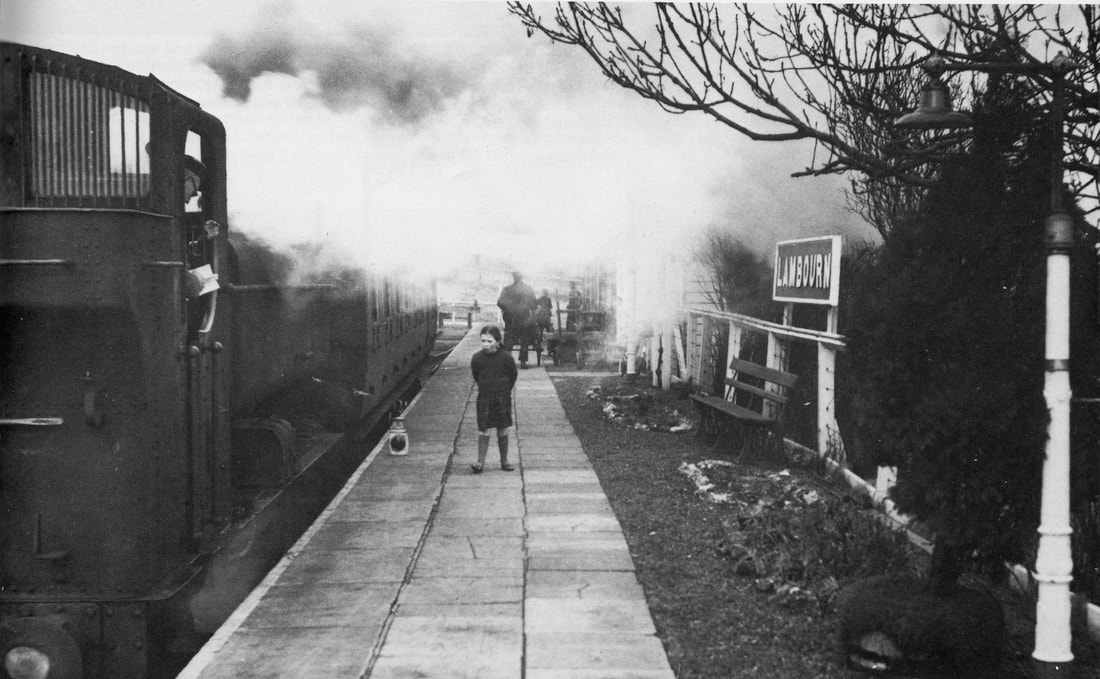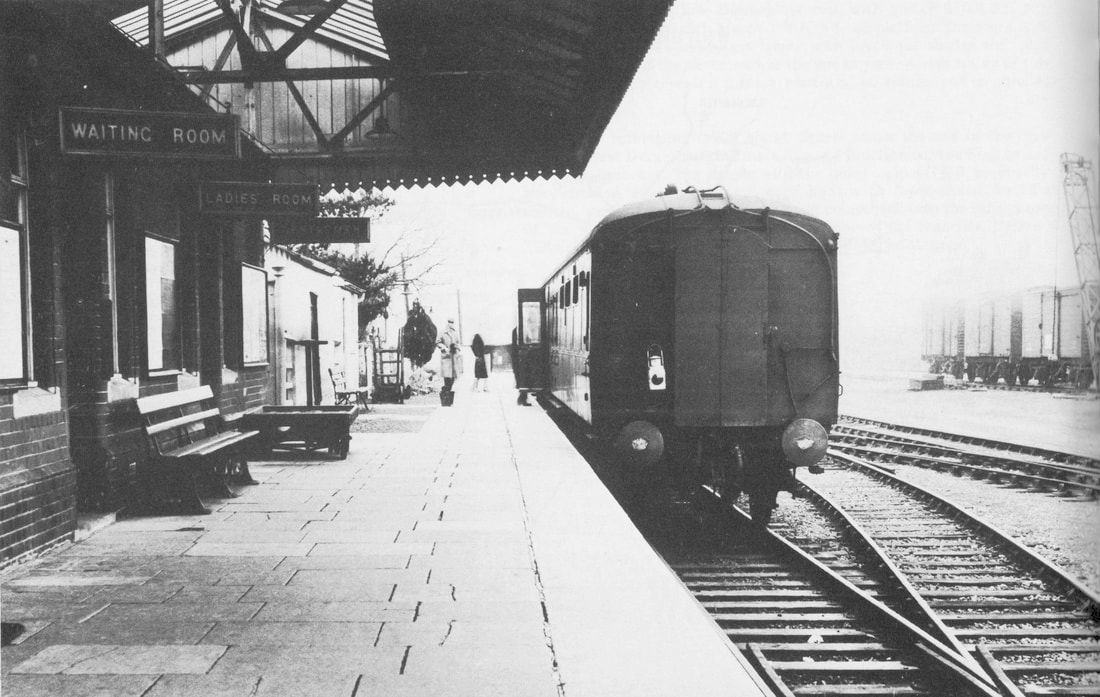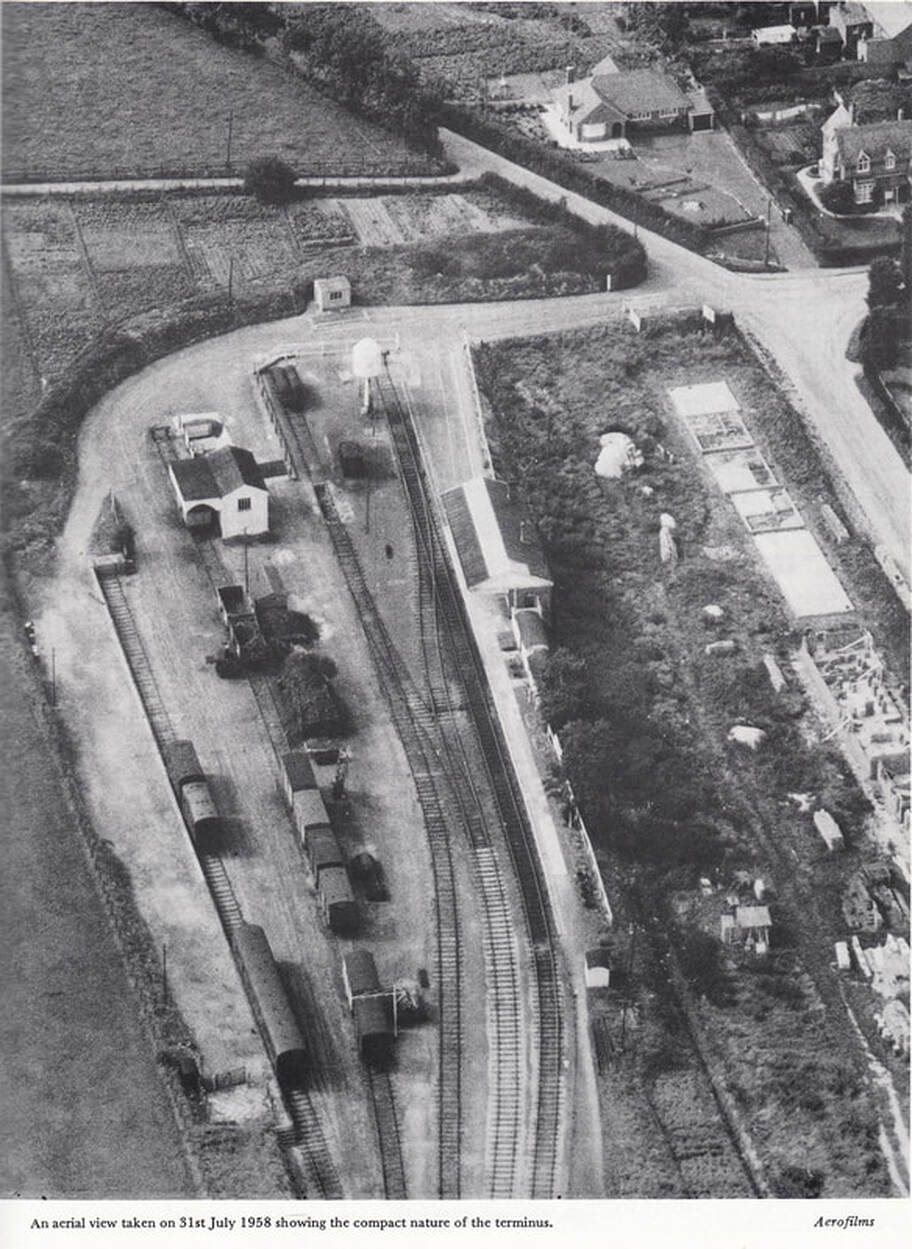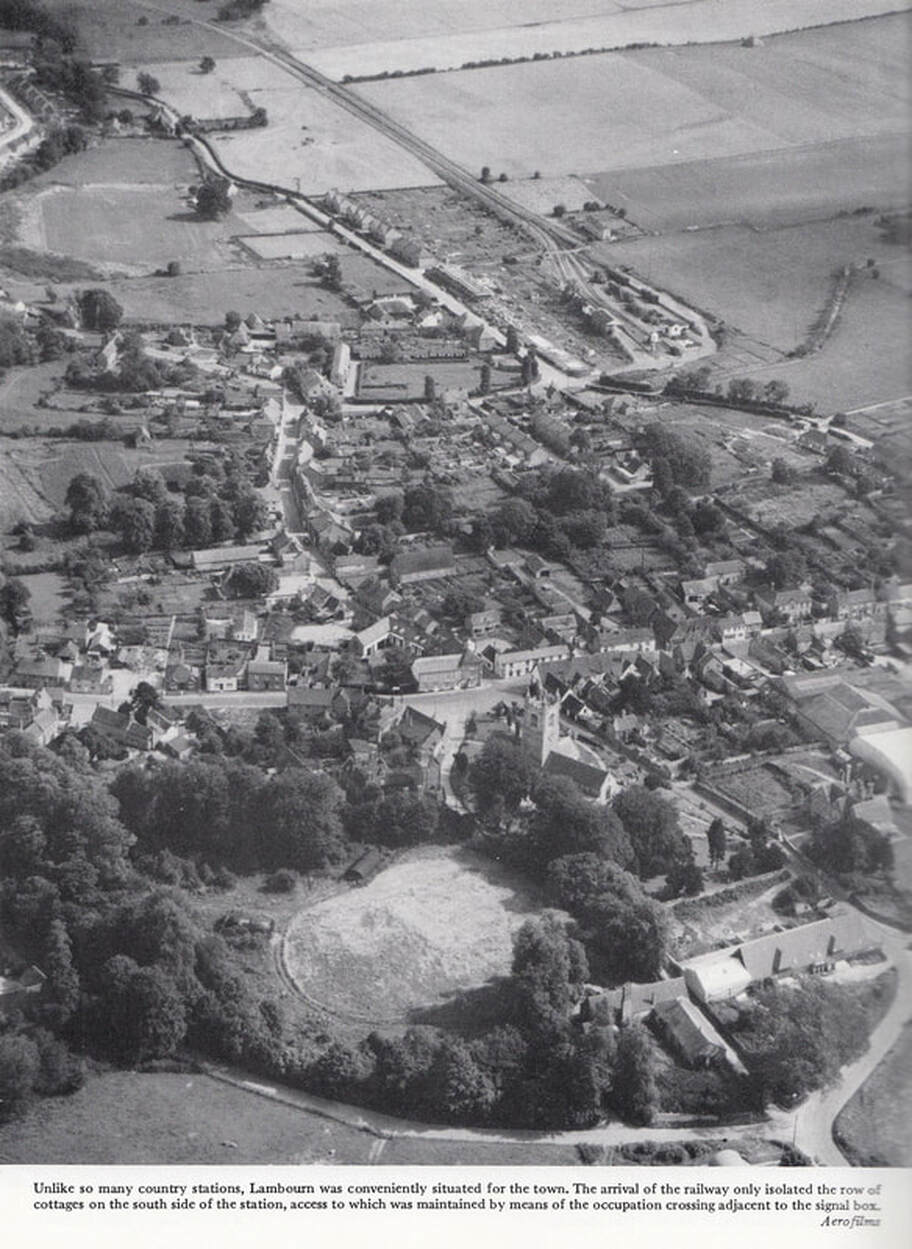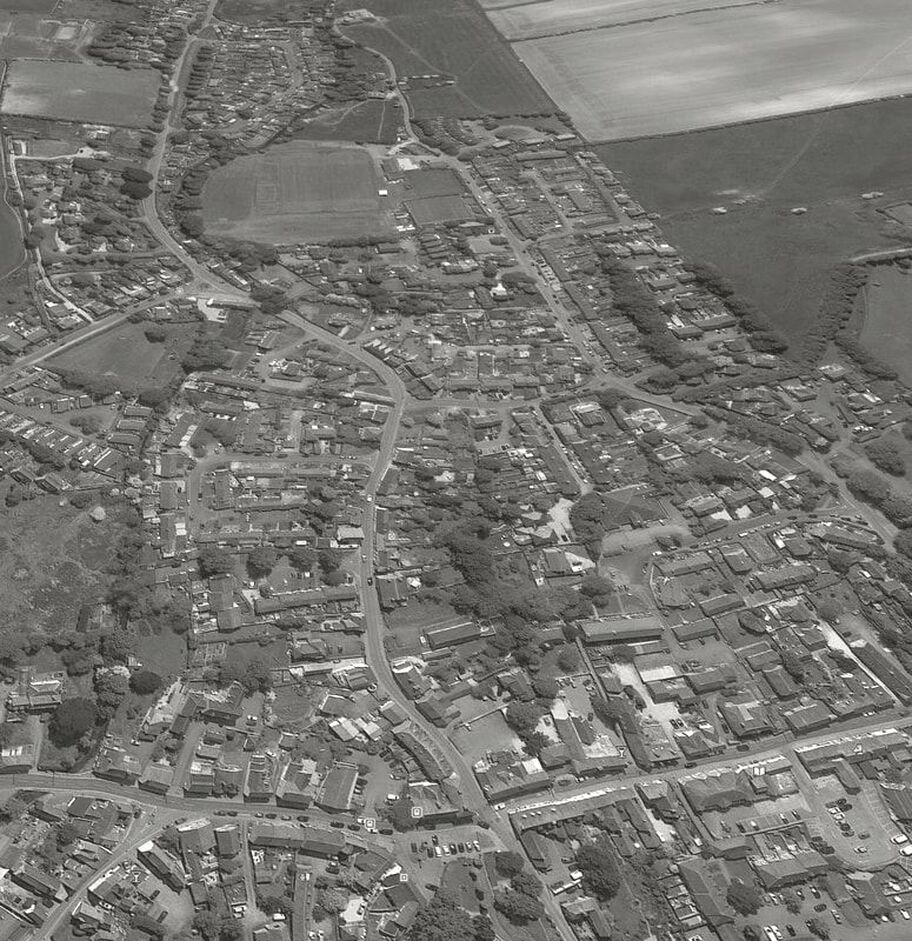The last decade
This was the last decade of railway passenger services that Lambourn's citizens would enjoy - although, alas, not enough to keep the line open. This page documents the last ten years of the Lambourn Valley Railway, which closed to passengers on 4 January 1960.
The southern half of the line remained open until 1973 for freight traffic to and from the USAF Welford Airbase, few would argue that this was the line's finest hour. However, we should be grateful that photography as a hobby took off after the war, as there were more high quality photos taken in that era than in any other.
The southern half of the line remained open until 1973 for freight traffic to and from the USAF Welford Airbase, few would argue that this was the line's finest hour. However, we should be grateful that photography as a hobby took off after the war, as there were more high quality photos taken in that era than in any other.
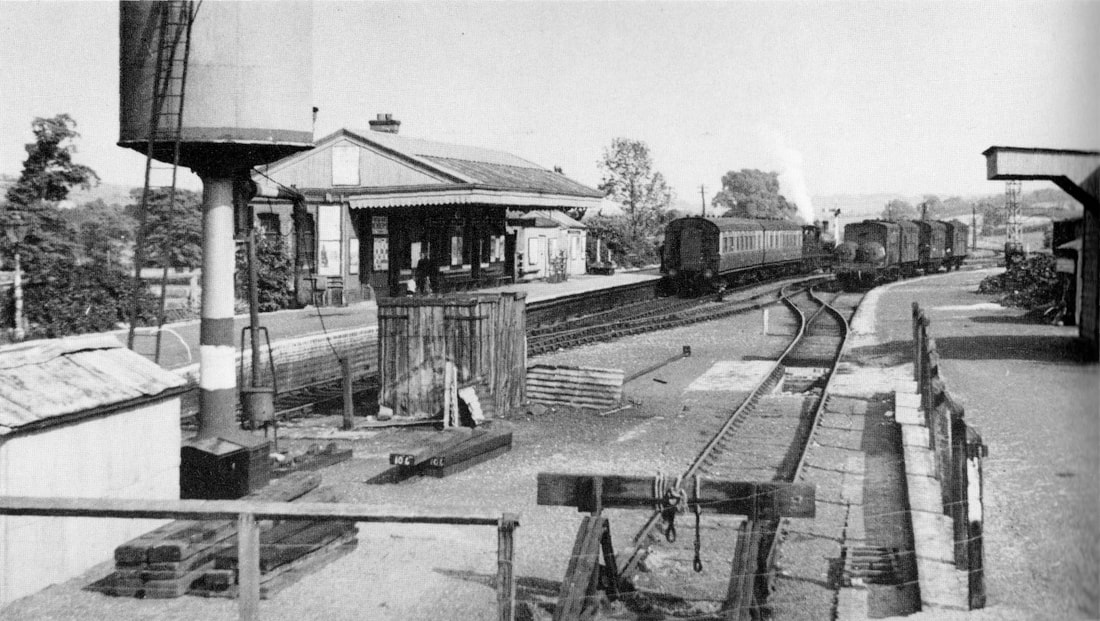
A general view of the yard around 1950 from the buffer stops. Note the rope around the stop, used to stop wagons running away down the slight gradient. The small wooden hut (centre) contained pumping equipment to replenish the water supply. In the background, it appears that a a safety valve is blowing off as the two-coach train prepares to leave; judging from the angle of the sun (Lambourn station was aligned east-west), it might have been the 12.40pm departure. Photo: P. J. Garland
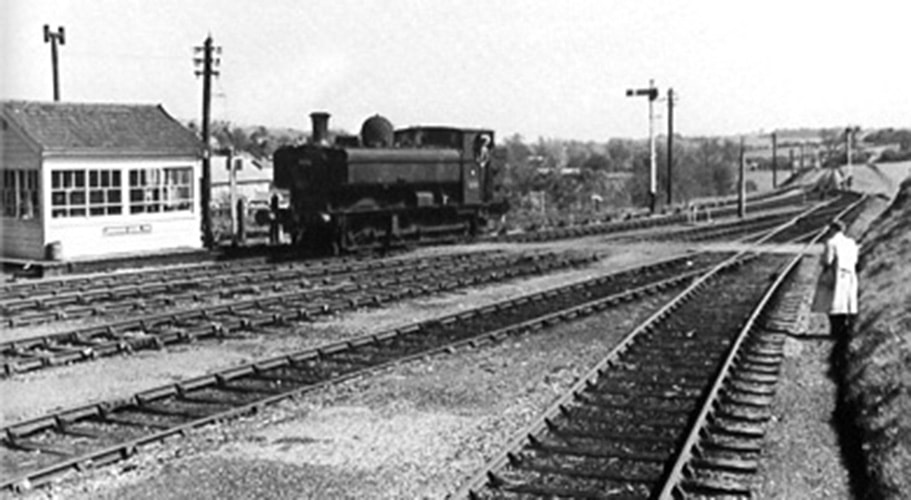
As the 0-6-0 Pannier Tank passes the signal box, watched by an onlooker in a coat, it crosses the pathway across the station throat.
Mick Dowdeswell adds: I am sure that it is Lewis Bodman, the brother of the late George Bodman who ran the coal business in Lambourn for many, many years. When Lambourn Station closed on January 4th 1960, George collected the coal from Welford until that closed, so it was delivered to Lambourn by road. George's father Louis started the business in Lambourn, when he bought it off a Mr Bates. The houses over the crossing were called Lockmeadow and after one end collapsed, they were deemed unsafe and everyone had to be rehoused probably early 60s, but without checking with someone who lived there, I'm not sure at present.
George Bodman most likely took the photo, as he took many others. He lent me many photos to scan which I now have in my archives. He was a lifelong friend of mine and sadly missed.
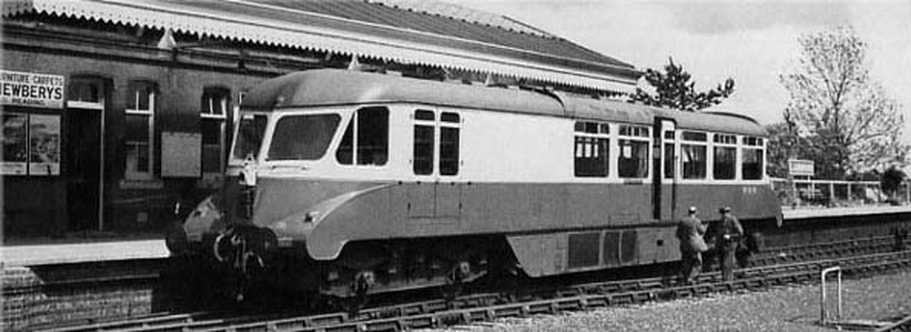
Railcar No. 18 awaits departure on 8th June 1954. This particular railcar was the first to feature cut-away bodywork that on all previous examples had shrouded the bogies, adding to the streamlined look so redolent of the 1930s. All subsequent examples followed this pattern, presumably to provide easier access to the mechanicals.
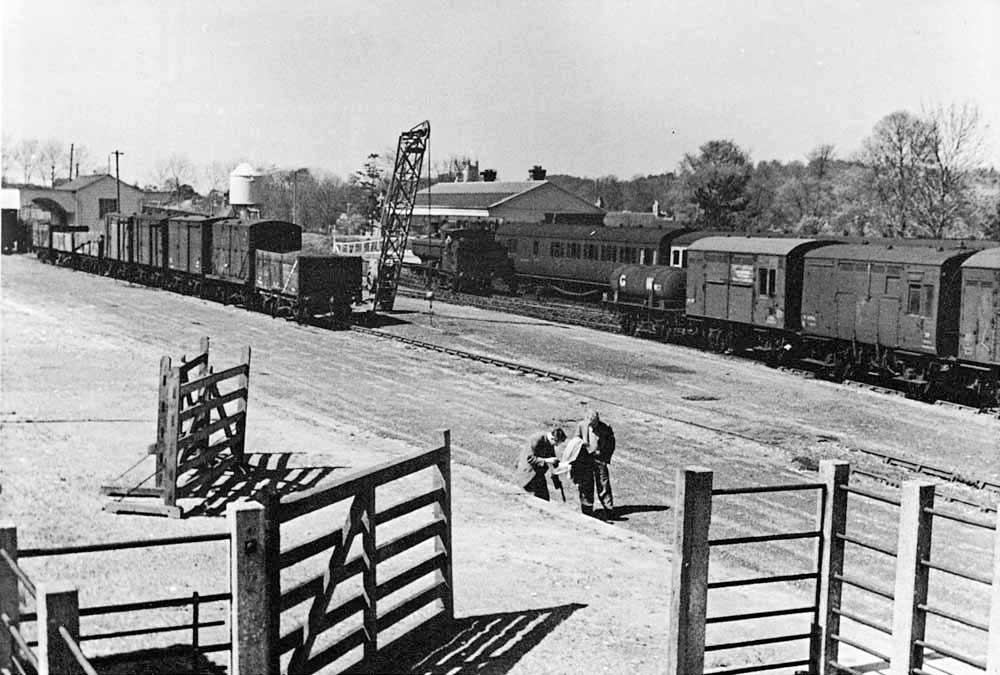
The station yard in 1954 with 0-6-0PT running round its train. The extensive loading bank in the foreground was required to cope with the large volumes of racehorse and cattle traffic. The Pacos (horseboxes) stabled in the yard were a familiar sight at Lambourn, some of the vehicles being allocated to particular trainers whose names appeared on the sides. The gas lighting in these vehicles was replenished from a Cordon (gas tank wagon) which was normally kept in the yard. Note the vehicle crossing to the goods shed.
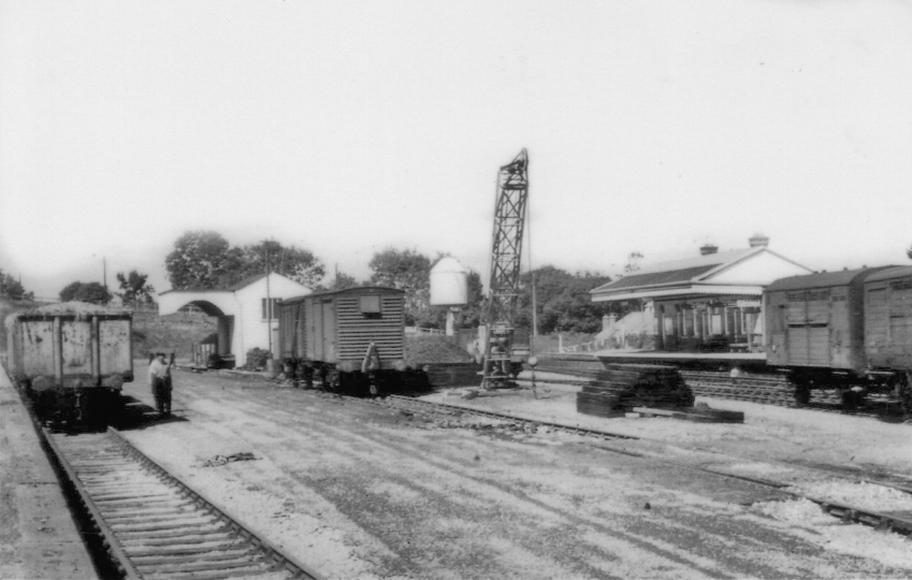
A view from the end of the horse platform, looking towards the station. As the engine shed has gone - it was removed in 1938 - this undated photo was taken after then. Note what look like wagons full of hay or straw on the left, presumably for the feeding of horses, or for their bedding in the horse boxes.
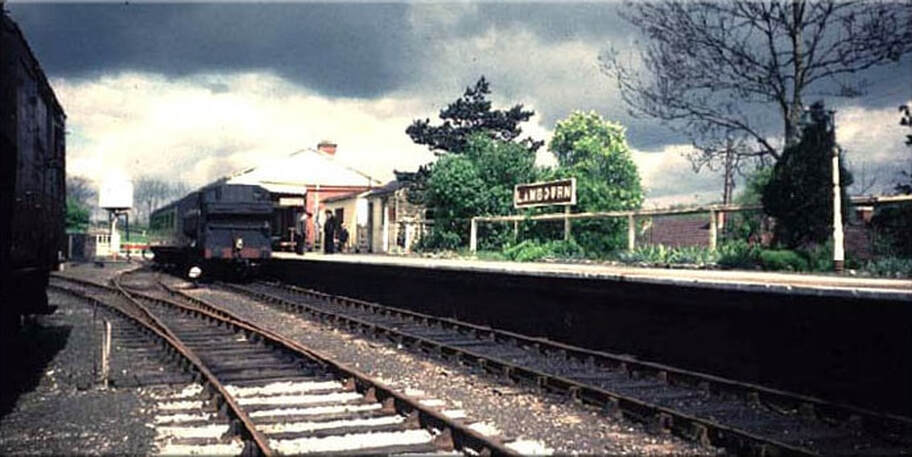
The storm clouds gather over Lambourn station, as they did over the entire Lambourn Valley operation. Despite the fresh ballasting evident in this image, suggesting faith in the future, despite the rusty railheads, on 4th January 1960 the Lambourn Valley branch line officially closed to passengers. It had enjoyed a lifespan of just 62 years.
Stationmasters
During its 62-year lifespan, Lambourn station was managed by just seven stationmasters:
- 1898 – 1905: W Brain
- Dec 1905 – May 1915: J R C Williams
- May 1915 – March 1926: G H Gamble
- March 1926 – May 1933: W J Parmee
- May 1933 – July 1941: W R H Mager
- Nov 1941 – Sept 1949: A C Smith
- Sept 1949 – 1960: S W Knapp
